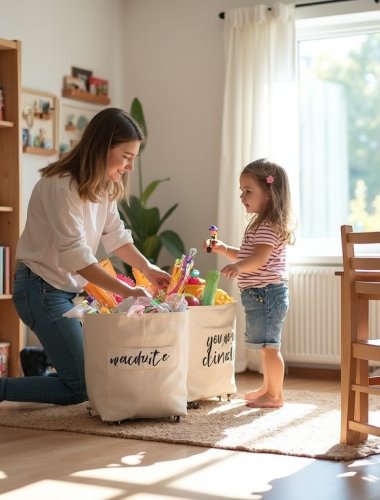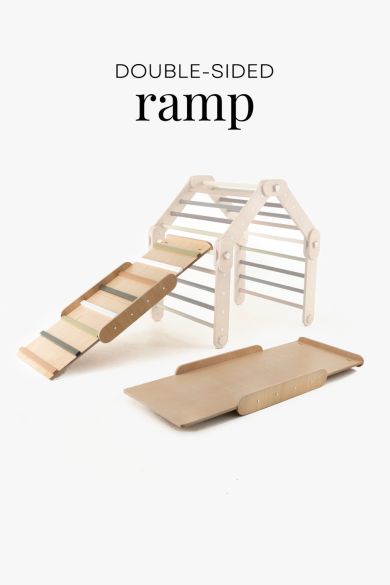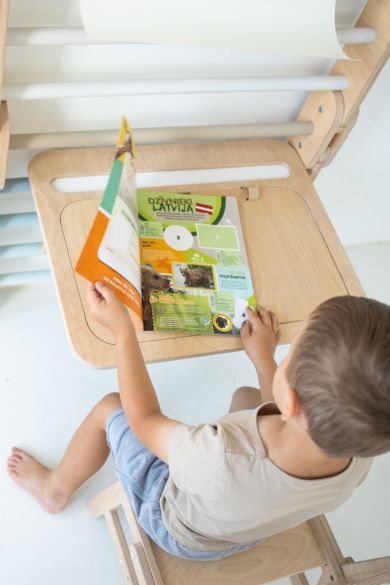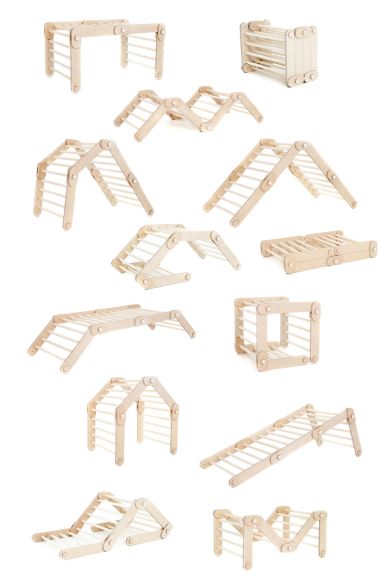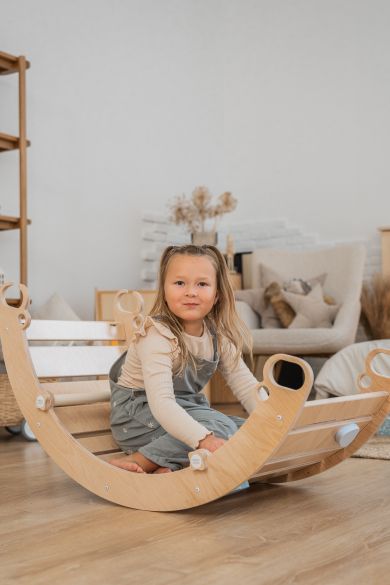Creative Storage Solutions:
- Use Clear Bins and Labeled Baskets: Store similar items like Legos or small toys in clear bins or labeled baskets for easy identification. Pediatric organizer Mary Jennings suggests, "Clear containers make clean-up easy and teach kids to categorize and sort their belongings
- Hanging Storage for Soft Toys: Use fabric bags or mesh organizers for stuffed animals. This saves floor space and keeps toys within reach.
- Under-Bed Storage Drawers: Utilize space under the bed with pull-out drawers for larger toys like puzzles and board games.
- Teach your child to put their toys back in place once they're finished playing. It will help to keep the room in order.
- A useful tip is to store toys at your child's eye level so they can easily see, choose, and put them away independently. This encourages self-directed play and a sense of order.
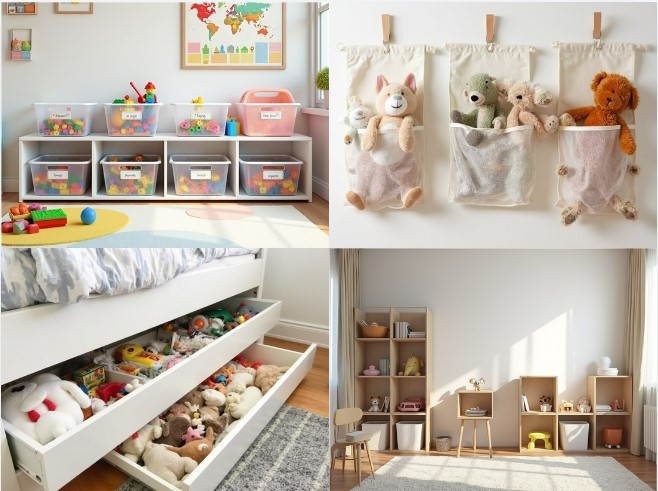
Smart Furniture Choices:
- Multi-Functional Furniture: Invest in cube storage units, play tables with built-in storage, or wall-mounted shelves that store toys and keep them off the floor. Dr. Sally Augustin, an environmental psychologist, suggests, "Multi-functional furniture optimizes room layout and reduces mess by combining storage and play areas."
- Select Foldable and Open-Ended Toys: Choose toys that offer flexibility and can be used in various ways. Look for foldable options like climbing triangles, ramps, or desks, which are ideal for small rooms as they can be easily stored when not in use. Open-ended toys with modular frames, such as building blocks or play sets, allow children to explore different ways to play and build.
Montessori educator Laura Greene explains, "Open-ended toys encourage children to think creatively and discover new ways to engage with their environment." These toys grow with your child, providing countless opportunities for imaginative and dynamic play.
Design a Well-Planned Kids' Corner
- Create Specific Play Zones: Divide the room into zones for different activities (reading, crafting, building). Dr. Louise Park, a child psychologist, finds that “dedicated areas for specific activities help children focus better and enjoy each activity more fully.”
- Incorporate Soft Flooring: Use rugs or mats to define areas and provide a comfortable surface. Add cushions or bean bags for a cozy reading
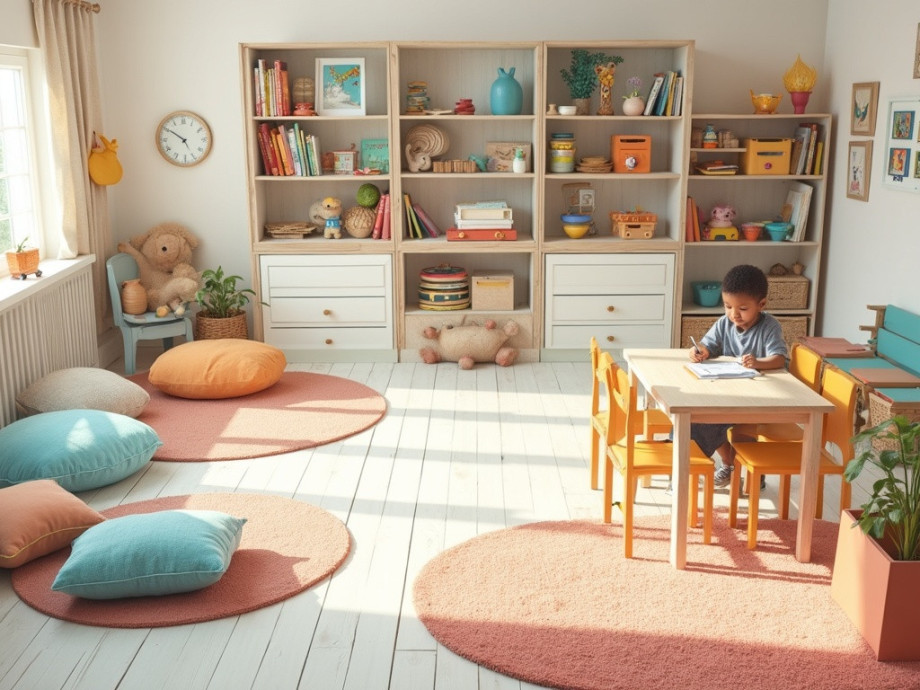
Encourage Involvement and Sustainability
- Involve Kids in the Process: Allow children to choose their storage solutions or label baskets together. This encourages ownership and makes them more likely to maintain order.
- Choose Eco-Friendly Options: Look for sustainable materials like recycled fabrics for storage solutions, or DIY your storage from repurposed items.
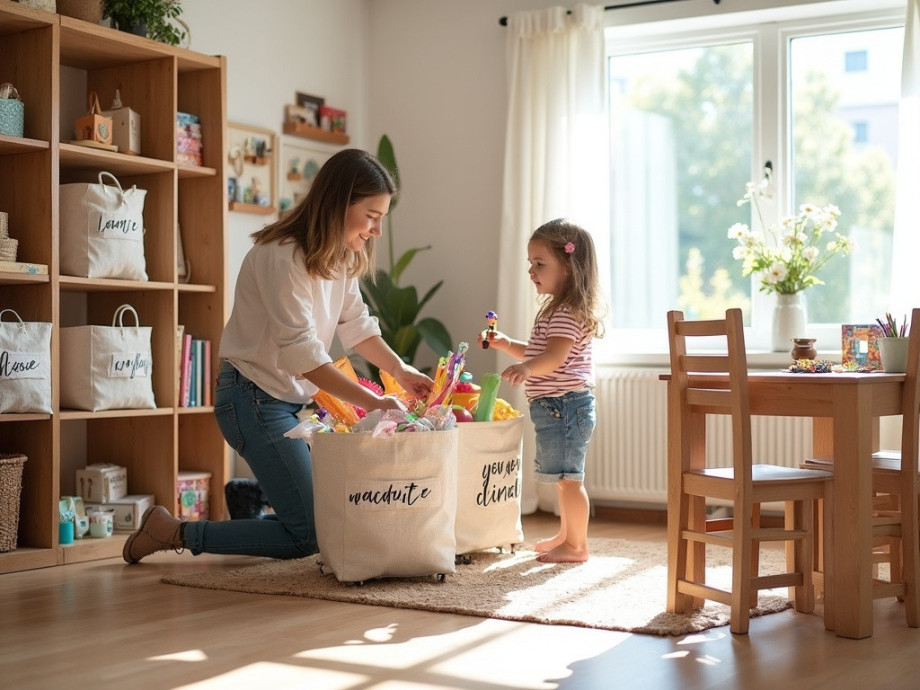
Conclusion:
By implementing these expert-backed tips, you can create a tidy, engaging space that fosters creativity and growth, making playtime enjoyable for both kids and parents while promoting sustainability and independence.
